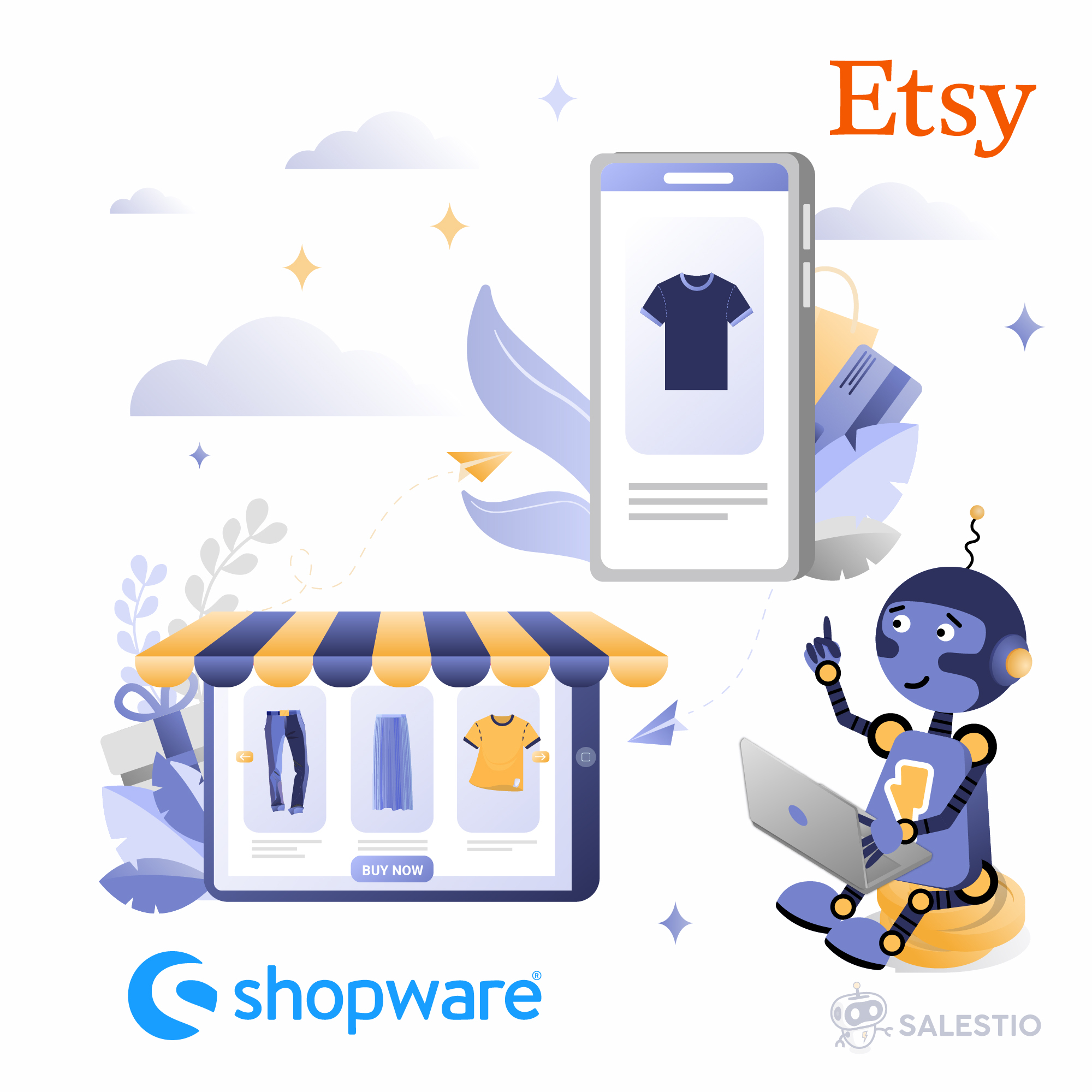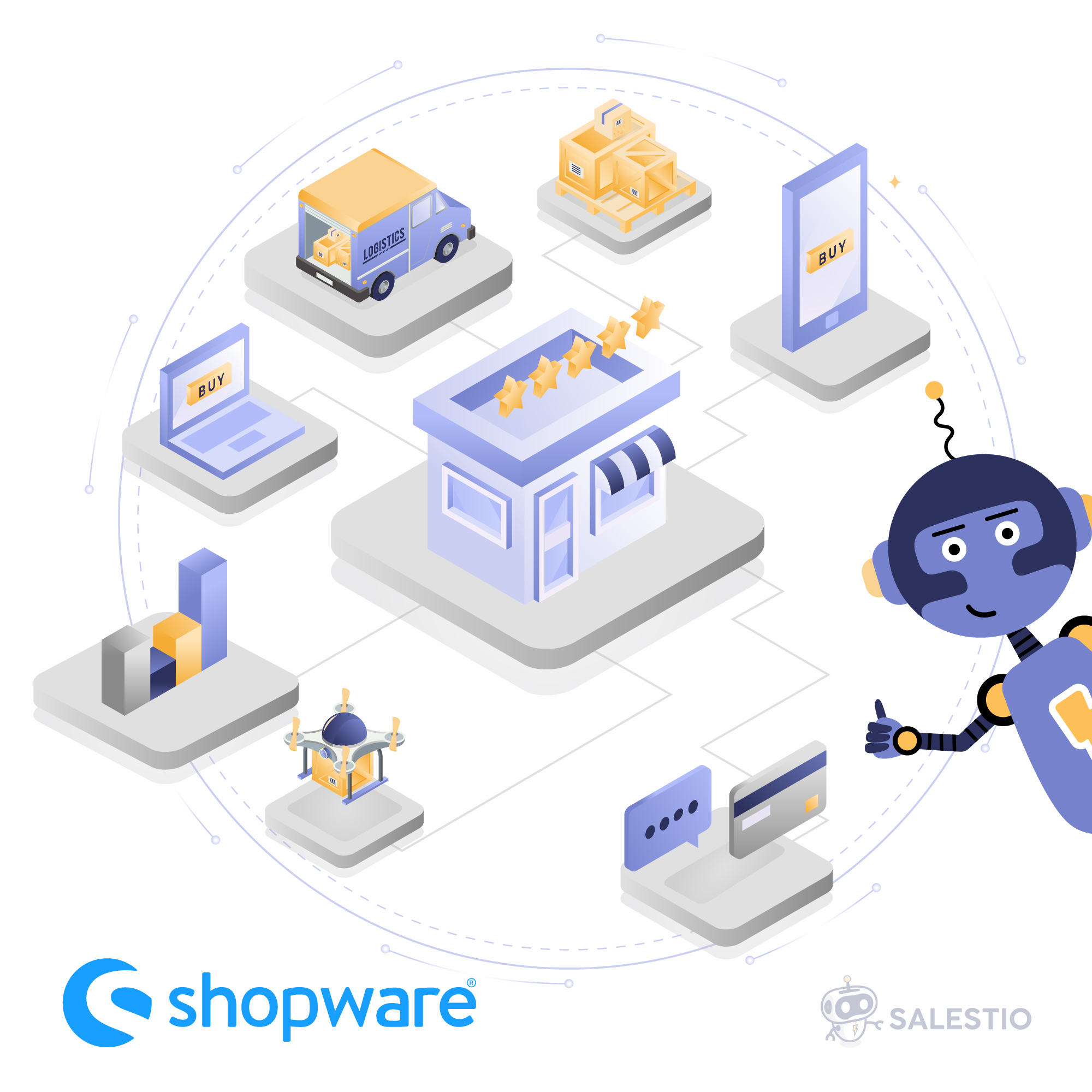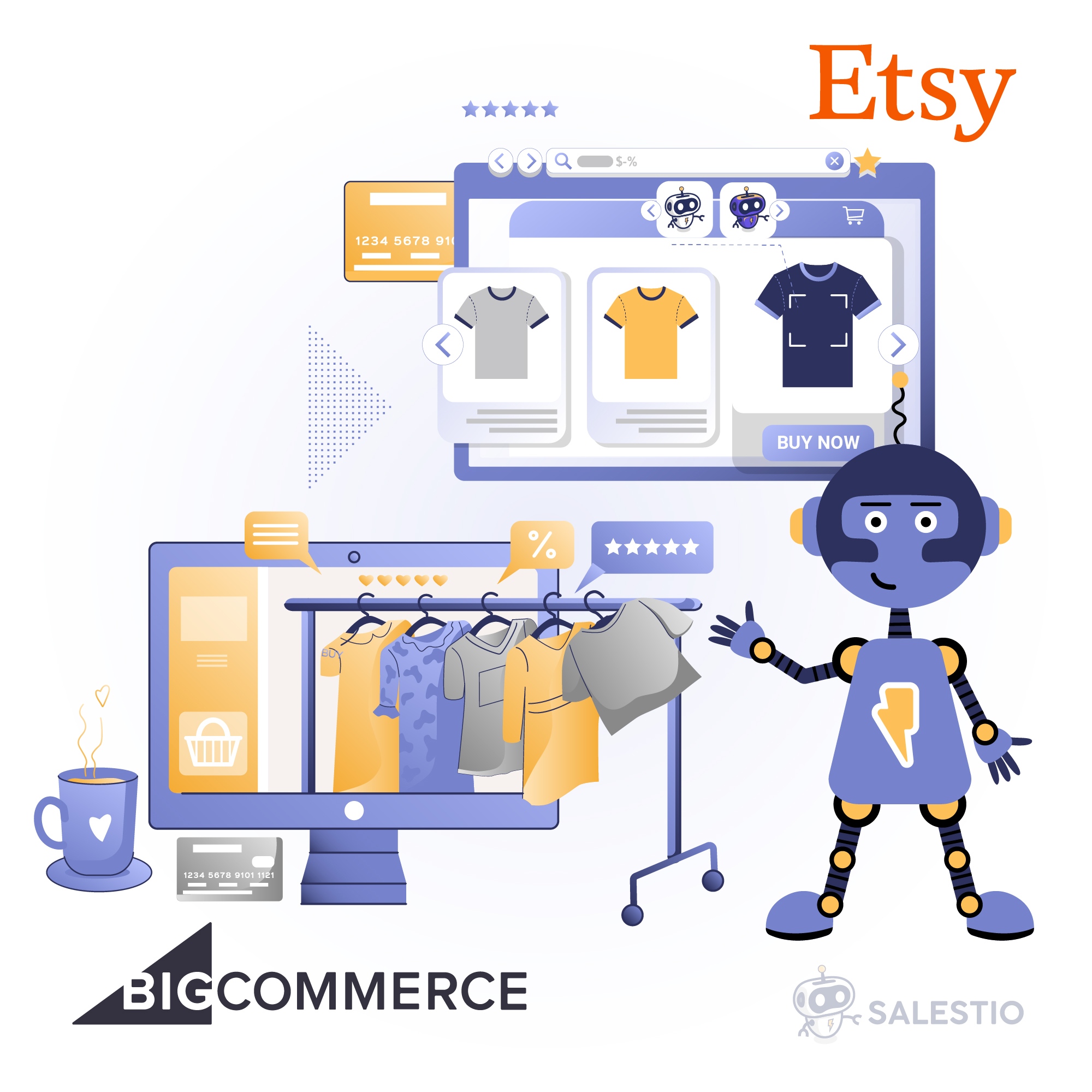05 Jan'23

WooCommerce and Shopify are two of the most popular e-commerce platforms available today, but what is better for merchants? In this article, we will compare WooCommerce and Shopify in terms of ease of use, features and functionality, design and customization, pricing, and customer support.
Introduction
Both platforms offer a range of tools and features to help online merchants sell their products online. Both platforms have their own unique sets of benefits and drawbacks, and it can be challenging to determine which one is the best fit for your business needs.
By the end of this article, you should have a good understanding of the strengths and weaknesses of each platform, and be able to make an informed decision about which one is the right choice for you.
So, what exactly are WooCommerce and Shopify, and how do they differ from one another? WooCommerce is a WordPress plugin that allows users to turn their WordPress website into a fully functional online store. It is an open-source platform, meaning that it is free to use and customize, and has a large community of developers who contribute to its development.
Shopify, on the other hand, is a standalone e-commerce platform that offers everything you need to build and manage an online store, including hosting, payment gateways, and customer support. It is a subscription-based service, meaning that you pay a monthly fee to use the platform.
Both WooCommerce and Shopify have their own unique sets of features and benefits, and it’s important to carefully consider which platform is the best fit for your business needs. In the following sections, we will delve into the details of each platform and compare them head to head.
Ease of use
When it comes to ease of use, both WooCommerce and Shopify have their own set of pros and cons.
WooCommerce can be a bit more complicated to set up and configure compared to Shopify, as it requires users to install the plugin on their WordPress website and set up all the necessary store functionality manually. However, once the setup process is complete, WooCommerce is relatively easy to use, with a user-friendly interface and clear instructions on how to manage your products, orders, and other store details.

Shopify, on the other hand, is designed to be easy to use right out of the box. The platform offers a simple and straightforward setup process, with a step-by-step guide to help you get your store up and running quickly. The Shopify interface is also very user-friendly, with clear navigation and intuitive tools for managing your store.

One major advantage of Shopify is that it is a standalone platform, meaning that it handles all aspects of your online store, including hosting, payment processing, and security. This can be a major advantage for merchants who don’t have the technical expertise or resources to set up and manage their own online store from scratch.
WooCommerce, on the other hand, requires users to handle their own hosting and security, which can be a bit more complex for non-technical users. However, for those who are comfortable with WordPress and have the technical skills to handle these tasks, WooCommerce can be a good option.
Overall, both WooCommerce and Shopify are relatively easy to use, but Shopify may be the better choice for merchants who want a more streamlined and hassle-free experience. On the other hand, WooCommerce offers more flexibility and customization options for those who are comfortable with a bit more technical work.
Features and Functionality
One of the key factors to consider when choosing an e-commerce platform is the range of features and functionality it offers. Both WooCommerce and Shopify offer a range of tools and features to help online merchants sell their products online, but there are some notable differences between the two platforms.
One area where WooCommerce shines is in the flexibility of its payment gateway options. The platform integrates with a wide range of payment gateways, including popular options like PayPal and Stripe, as well as more specialized gateways like Amazon Pay and Square. This gives merchants the ability to choose the payment gateway that best fits their needs and preferences.
Shopify also offers a range of payment gateway options, including its own Shopify Payments service, which is available in certain countries. However, the platform doesn’t offer as much flexibility in terms of payment gateway choices as WooCommerce.
Both WooCommerce and Shopify offer a range of shipping options, including the ability to calculate shipping rates based on weight and location. WooCommerce also offers integration with popular shipping carriers like USPS and FedEx, while Shopify offers integration with a wider range of carriers, including DHL and UPS.

In terms of product management, both WooCommerce and Shopify offer a range of tools for managing and organizing your products, including the ability to create product categories (collections in terms of Shopify) and tags, set up product variants (such as size and color), and add product descriptions and images.
One area where Shopify stands out is in its integration with third-party services and platforms. The Shopify App store is one of the biggest app stores across e-commerce platforms. All types of integration could be found there. Additionally, Shopify carefully verity and tests every integration. The downside most integrations and apps there having subscription costs.
The WooCommerce platform as well as a very wide plugin store. But comparing it to Shopify there are fewer options, so sellers are more locked to specific vendors.

Additionally, we would like to highlight integration with online marketplaces like Amazon, eBay, and Etsy. Both platforms do not support it natively, so merchants need to choose to access a range of plugins and applications that could work with Shopify or WooCommerce.
Salestio — multichannel e-commerce integration support both e-commerce platforms – Shopify and WooCommerce. Salestio helps merchants sell their products on these popular marketplaces, including the ability to list and manage products, and track sales and orders.
Overall, both WooCommerce and Shopify offer a range of features and functionality to help merchants sell their products online. WooCommerce offers more flexibility in terms of payment gateways and shipping carriers, while Shopify offers more robust tools for selling and integration with third-party tools.
Design and customization
One of the key considerations for many online merchants is the design and appearance of their store. Both WooCommerce and Shopify offer a range of options for customizing the look and feel of your online store, but there are some notable differences between the two platforms.
WooCommerce offers a range of free and paid themes that allow you to change the appearance of your store, including the layout, color scheme, and font. The platform also offers a range of customization options, including the ability to add custom CSS and modify the templates to further tailor the look and feel of your store.
Shopify also offers a range of themes for customizing the appearance of your store, including both free and paid options. The platform offers a wide range of themes to choose from, including themes specifically designed for certain types of businesses, such as fashion and home decor. Shopify also offers a range of customization options, including the ability to add custom CSS and modify the templates to further tailor the look and feel of your store.
One advantage of Shopify is that the platform offers a “drag and drop” page builder tool called Shopify Sections, which allows merchants to easily customize the layout and content of their store pages without any coding knowledge. This can be a major advantage for merchants who don’t have the technical skills or resources to customize their store through code.
You can take a look at how to modify Shopify design in our video
In terms of custom options, both WooCommerce and Shopify offer the ability to add custom product options, such as size, color, and material. However, WooCommerce offers more flexibility in terms of custom options, as it allows merchants to create custom product fields and add additional options beyond the standard size and color options.
Overall, both WooCommerce and Shopify offer a range of options for customizing the design and appearance of your online store. WooCommerce offers more flexibility in terms of customization options, while Shopify offers a more user-friendly drag-and-drop page builder tool and a wider range of themes to choose from.
Pricing
One of the key factors to consider when choosing an e-commerce platform is pricing. Both WooCommerce and Shopify offer a range of pricing options, but there are some notable differences between the two platforms.
WooCommerce is a free open-source platform, meaning that users can download and use the plugin at no cost. However, merchants will still need to pay for hosting, a domain name, and any premium themes or plugins they want to use. The cost of these additional expenses can vary widely, but it is typically cheaper than the subscription fees charged by Shopify.
Shopify offers a range of subscription plans, starting at $29 per month for the Basic plan and going up to $299 per month for the Advanced plan. The higher-priced plans offer more advanced features and functionality, such as gift cards, professional reports, and advanced report builders.

In addition to the monthly subscription fee, Shopify also charges transaction fees for each order processed through the platform. The exact amount of these fees depends on the plan you choose, but the Basic plan charges a 2.1% + $0.30 fee per transaction, while the Advanced plan charges a 1.6% + $0.30 fee per transaction.
Shopify also offers a high-end enterprise solution called Shopify Plus, which is designed for large and high-volume merchants. Shopify Plus offers a range of advanced features and functionality, as well as a dedicated account manager and support team. Pricing for Shopify Plus is available on request.
Overall, WooCommerce is a more cost-effective option for merchants who are just starting out or have a lower volume of sales. However, the platform does require merchants to handle their own hosting, security, and other technical tasks, which can be a drawback for some. Shopify offers a more comprehensive and hassle-free solution, but the subscription fees and transaction fees can add up for high-volume merchants. Shopify Plus offers a range of advanced features and support for large enterprises, but the pricing can be significantly higher than the regular plans.
Customer support
When it comes to customer support, both WooCommerce and Shopify offer a range of options for getting help with any issues or questions you may have.
WooCommerce is an open-source platform, which means that it has a large community of users and developers who contribute to the platform. This can be a major advantage for merchants who need help with issues or questions, as there is a wealth of information and support available through online forums and resources. WooCommerce also offers a range of documentation and tutorials on its website to help users get up and running with the platform. But this kind of support is more like “Do it yourself” (DIY)
In terms of official support, WooCommerce offers email and live chat support. But this kind of support can’t help you with technical questions and also support an explanation of the UI of the store. Reach a level of support similar to Shopify, mostly like required contact with a web development agency that could maintain and support your e-commerce website.
Shopify also offers a range of support options for its users, including email, live chat, and phone support. The platform also has a large knowledge base and a range of tutorials and resources to help merchants get up and running with the platform.
One major advantage of Shopify is the availability of 24/7 support, which can be a major advantage for merchants who need help with issues or questions at any time of the day. WooCommerce does not offer 24/7 support, but the large community of users and developers can often provide help and assistance on a wide range of issues.
Overall, both WooCommerce and Shopify offer a range of options for getting help with any issues or questions you may have. Shopify offers more comprehensive and round-the-clock support, while WooCommerce relies on a combination of minimum official support and community resources.
Pros and cons
When it comes to choosing an e-commerce platform, it’s important to weigh the pros and cons of each option to determine which one is the best fit for your business needs. Here are some of the main pros and cons of WooCommerce and Shopify:
WooCommerce pros:
- Free to use and customize
- A large community of users and developers
- Flexibility in terms of payment gateways and shipping carriers
- More advanced product management and custom options
WooCommerce cons:
- More complex setup and configuration process
- Requires users to handle their own hosting and security
- Limited official support options
- A bit less number of integrations
- Performance problems with a large number of products
Shopify pros:
- The simple and straightforward setup process (less than in minute you have shop live)
- Wide range of themes and customization options
- A robust list of different integration provided by third-party developers
- Comprehensive and round-the-clock customer support
Shopify cons:
- Subscription-based pricing model
- Transaction fees for each order
- Limited flexibility in terms of payment gateways and shipping carriers
- Limit possibility of customization, only could be done with third-party integrations
Overall, WooCommerce is a good choice for merchants who are comfortable with a bit of technical work and want a more flexible and customizable platform. The platform is also a good choice for merchants who need advanced product management and custom options. Shopify is a good choice for merchants who want a more streamlined and hassle-free experience. However, the subscription fees and transaction fees can add up for high-volume merchants, and the platform may not be as flexible as WooCommerce in terms of payment gateways and shipping carriers.
Ultimately, the best platform for your business will depend on your specific needs and preferences. It’s important to carefully consider the pros and cons of each platform and choose the one that best fits your business needs.
Conclusion
In conclusion, WooCommerce and Shopify are both excellent e-commerce platforms that offer a range of tools and features to help online merchants sell their products online. Both platforms have their own unique sets of benefits and drawbacks, and the best choice for your business will depend on your specific needs and preferences.
WooCommerce is a free and open-source platform that offers a high level of flexibility and customization, as well as a large community of users and developers to help with any issues or questions. However, the platform can be a bit more complex to set up and configure and requires users to handle their own hosting and security.
Shopify is a subscription-based platform that offers a more streamlined and hassle-free experience, with a range of themes and customization options and comprehensive customer support. However, the platform charges subscription fees and transaction fees, which can add up for high-volume merchants, and may not offer as much flexibility as WooCommerce in terms of payment gateways and shipping carriers.
As WooCommerce is a very important platform for merchants, Salestio recently extended its integration to support WooCommerce as well. You can read more in our article – Integrating Amazon with WooCommerce. And you can start a free trial for Salestio WooCommerce Integration
Shopify for Salestio is one of the core platforms because most of the merchants select the easiest approach to start an e-commece business with it. And we support Ebay, Amazon, and Etsy integration for Shopify — Salestio Shopify Integration for Ebay, Amazon, and Etsy
In the end, the choice between WooCommerce and Shopify will depend on your specific business needs and preferences. If you are comfortable with a bit of technical work and want a more flexible and customizable platform, WooCommerce may be the right choice for you. On the other hand, if you want a more streamlined and hassle-free experience, Shopify may be the better option. It’s important to carefully consider the pros and cons of each platform and choose the one that best fits your business needs.





